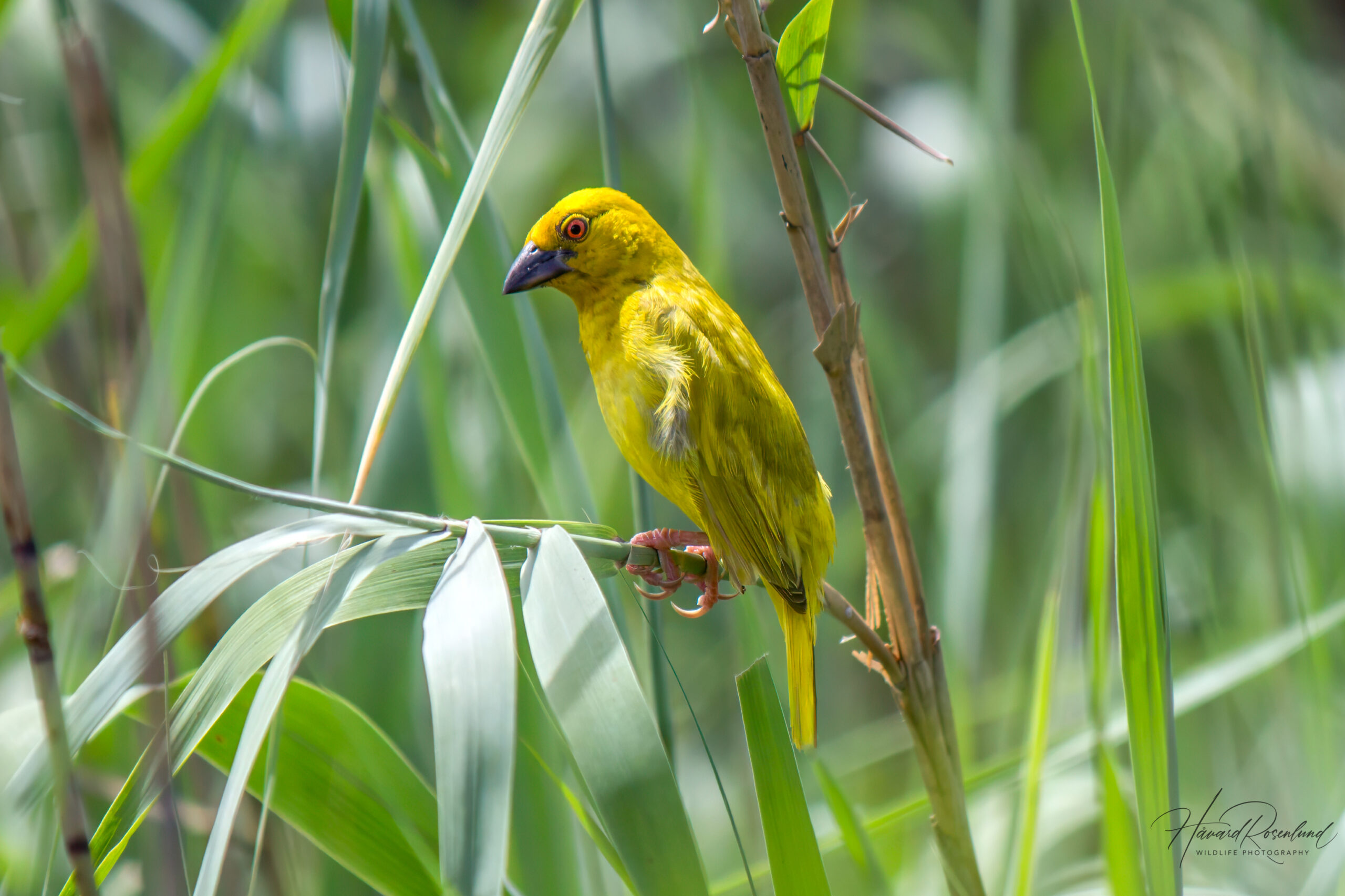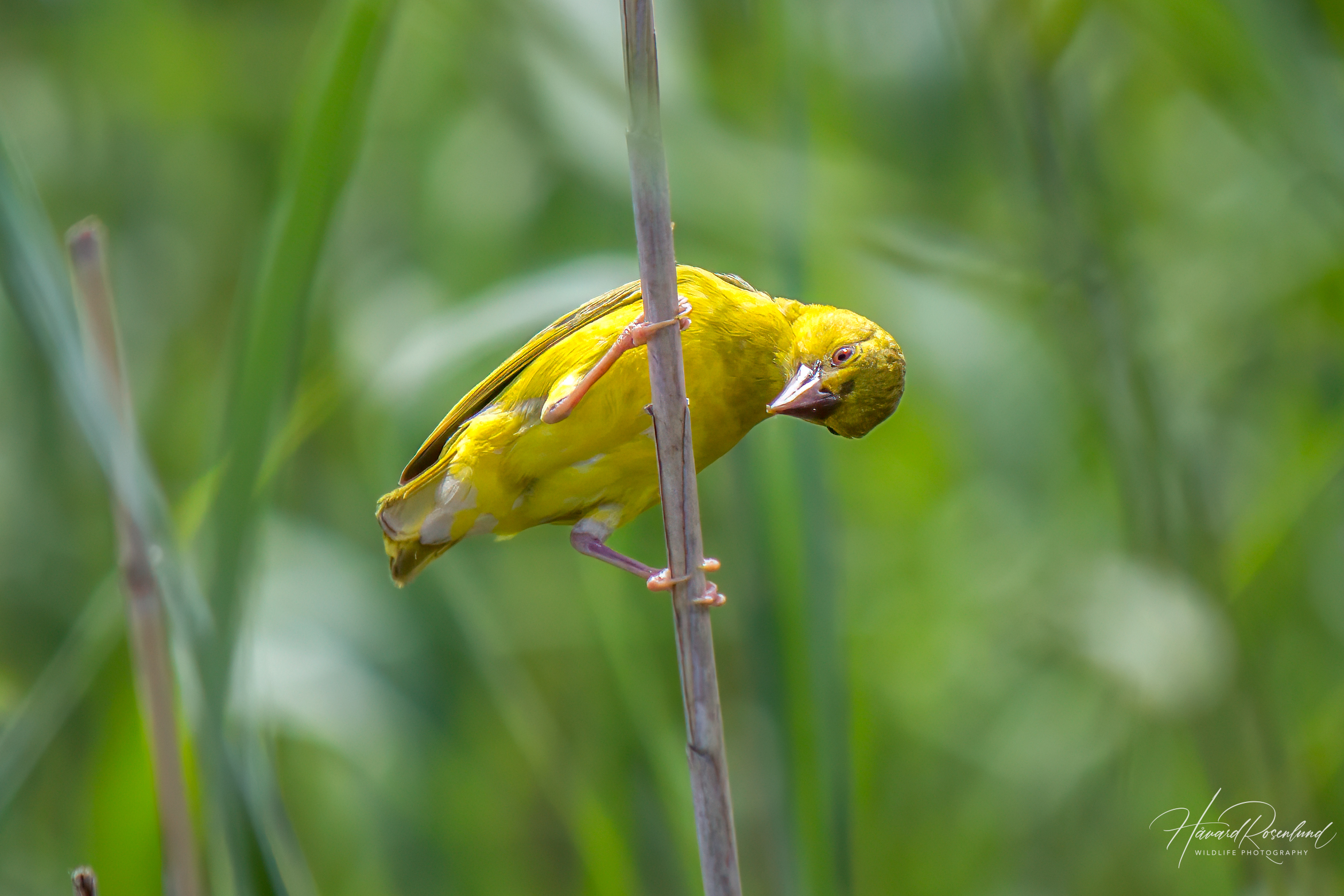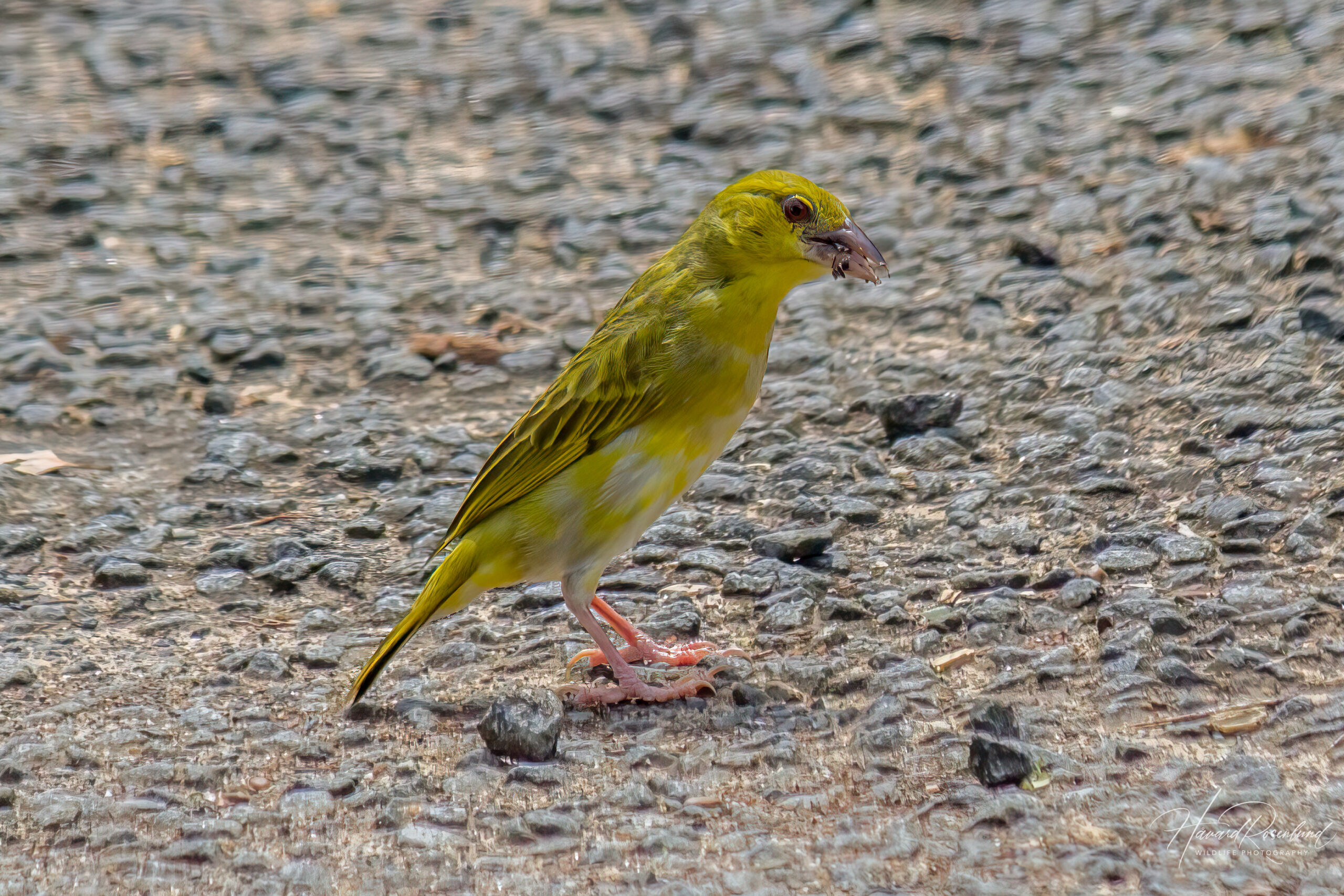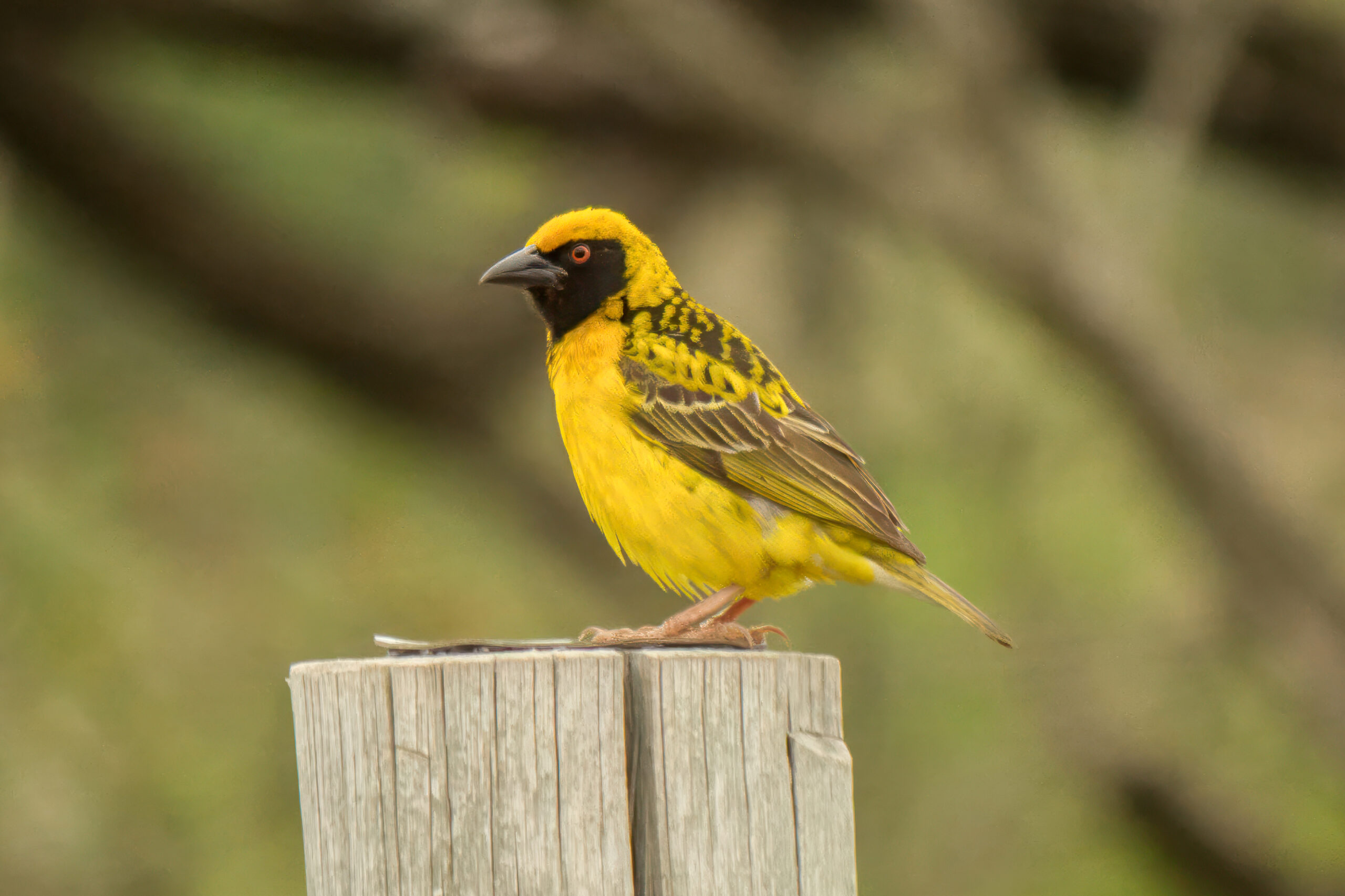Description
The African golden weaver (Ploceus subaureus) is a vibrant and eye-catching bird native to the eastern regions of sub-Saharan Africa. This species is distinguished by its bright yellow plumage, with males showcasing more intense colors during the breeding season. Female is mostly all-yellow, but duller in coloration. Both sexes have red eyes. It’s a medium-sized bird, typically measuring around 15-16 cm (5.9-6.3 in) in length. Unlike its close relatives, the African golden weaver has a more pronounced golden-yellow hue on its head and underparts, setting it apart from other weaver species.
Diet & habitat
The African golden weaver thrives in a range of habitats, predominantly favoring wetlands, marshes, and areas near rivers and lakes. They are adaptable and can also be found in cultivated lands and gardens. Their diet primarily consists of seeds and insects, which they skillfully extract with their strong, conical beaks. These birds are known for their agile feeding habits, often seen flitting among reeds and grasses or hanging upside down from stems as they forage.
Nesting
Breeding season for the African golden weaver varies by location but generally occurs during the rainy season when food is abundant. They are highly social birds, often forming large colonies during the breeding season. Males perform vigorous and colorful displays to attract females, including fluffing their feathers and loud singing. These birds are known for their unique and intricate nest-building skills. Males weave elaborate spherical nests with a downward-facing entrance, using strips of grass and reed. The nests vary in size and complexity, and a single male may construct several nests to attract females. Females select mates based on the quality of the nests. After mating, the female lays 2-4 eggs. The incubation period lasts about 11-14 days, and the fledging period until the young leave the nest is approximately 17-21 days.
Status
The population of the African golden weaver is stable, thanks in part to its adaptability to various environments. However, like many species, it could potentially be impacted by extreme habitat destruction and changes in climate patterns. It is listed as least concern on the IUCN Red List.








